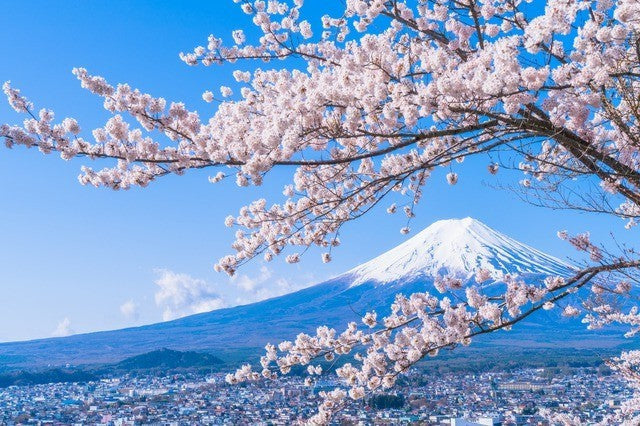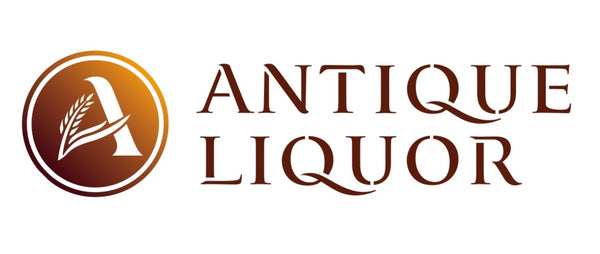
How global climate change will affect the quality and price of whiskey
Share

In Japan, where there are four distinct seasons, it is normal to think that hot midsummer days are normal because it is summer, and cold midwinter days are normal because it is winter. Although there are occasional cool summer days and warm winter days, except for farmers, most people probably think of them as just a lucky day to go out.
However, in recent years, global climate change and abnormal weather have become more severe, and even Japanese people, who are insensitive to climate changes due to the four seasons, are increasingly surprised by sudden and drastic changes in the weather. In particular, in the summer, the weather changes are so drastic that the word "whimsical" cannot describe it, with torrential rains, hail, violent thunderstorms, and tornadoes, and I feel that there is something different about the weather in Japan that I know.

On the other hand, the extreme heat in Europe seems to be affecting not only crop growth and changes in precipitation, but also land quality. I remember seeing news reports of Europe being thrown into chaos by extreme heat with temperatures exceeding 40 degrees Celsius, with a maximum of 46 degrees Celsius, droughts, and floods occurring at the same time. Every time I see this, I think, "Oh, local barley production will decrease dramatically." In fact, we have been able to confirm samples from a certain region in Europe where annual barley production has decreased by about 40% due to climate change and other factors.
In this way, global climate change, which is progressing faster than humankind expected, is already having a devastating effect on industry and life, and I think that the world's whiskey industry will also face a considerable crisis in the near future. Whisky will be treated as a luxury item more than it is now, and it will cost more to produce and consume whiskey than it does now. I think that the following will probably happen. I am just one of the whiskey lovers and not an expert, but I think that the general direction is not wrong...? I think.
1) Significant declines in barley production and quality due to climate change

The most direct and devastating factor is the decline in the production and quality of barley used in whiskey production. As mentioned above, due to the rapid climate change in recent years, many barley farms have seen their production drop by more than 40%, and this trend is expected to continue.
In a 2023 interview, Chairman Katsuyuki of Asahi Group, famous for Asahi Beer, said, "In the UN's worst-case scenario of a four-degree rise in global temperature by 2050, France's barley supply would fall by 18%." If the Paris Agreement's goal of two degrees of warming is met, supply would fall by 10%, and in the case of Poland and the Czech Republic, two of the major beer-producing countries, a rise of just four degrees could reduce barley supplies by 15% and 25%, respectively.
As the cost of growing barley increases, the quality of the barley itself declines, and the cost of making whiskey increases sharply. Even if whiskey bottled in 10 years' time is made from barley harvested around 2020 or before, the high production costs in 10 years' time will be reflected directly in the price of whiskey in 10 years' time.
2) In light of the global food shortage, grain alcohol production may be criticized and social costs may increase.

You may think that such a thing is impossible, but social demands and pressures for a sustainable economic environment are growing day by day, regardless of the business field. It is said that the continued increase in the world population in recent years, wars, military conflicts, and problems such as the decrease in food production and the decline in food production capacity due to climate change, may cause a global famine in the medium to long term. In this context, even raising livestock by feeding them grains is beginning to be socially criticized, and it is likely that criticism will soon grow against the processing of grains such as barley and corn into alcohol instead of food.
Many Scotch whisky distilleries are now increasing new investments in sustainable businesses. At Glengoyne Distillery, they have introduced a wetland facility that captures carbon dioxide, purifying the distillery's wastewater with wetland plants, and creating a circulation system that manages and uses the purified water again. By creating this wetland, it has also become a refuge for local wildlife, including 14,500 plants of 20 different kinds and 80,000 bees, improving biodiversity.
Tomatin Distillery was also selected as the Sustainable Distillery of the Year at the 2023 Icons of Whisky Awards. It is switching from traditional fuels to biomass energy and liquefied natural gas for the fuel needed for whisky production, and like Glengoyne, it is creating wetlands to contribute to improving biodiversity. It has also introduced a system to purify the plant's treated water and is even using solar power to reduce carbon dioxide emissions.
In the future, other distilleries will be forced to invest in facilities to develop more sustainable systems, but where will these huge costs come from? Naturally, they will be added to the price of the whiskey they sell. Therefore, the price of whiskey will continue to rise in the future, and in the case of long-aged whiskey, it may become a price that can only be enjoyed with the eyes.
3) The depletion of the high-quality natural resources used to make whiskey barrels.

Currently, the whisky business in Scotland generally uses casks made from European oak. Although consuming wood gives the impression of destroying nature, it is said that it actually contributes to global environmental issues, since forest resource development and felling are carried out in parallel. However, the problem is not the environment, but the decline in the production volume and quality of wood resources used for oak casks for aging whisky.
- Evacuation of oak barrels: The expulsion of volatile aromatic substances (aldehydes), lipids, tannins, lactones, etc. from the oak barrels.
- Absorption effect of oak barrels: The charred parts inside the barrels act like carbon filters, absorbing the components of the whiskey.
- Interaction between oak barrels and whiskey: Interaction between barrels and whiskey. The interaction between the two creates new substances by exchanging constituent substances with each other.
- Oxidation of whiskey: Evaporation and oxidation caused by the fact that oak barrels are not completely sealed.
As mentioned above, during the maturation of whiskey, the components of the barrel react chemically with the whiskey to develop its flavor. However, due to changes in the components of wood caused by climate change and the longer wood-growing period, it seems that it is becoming difficult to secure high-quality oak barrels for making delicious whiskey.
In addition, the distribution of distinctive barrels, such as wine barrels and cognac barrels, for aging whiskey has drastically decreased. Due to the decline of the European wine industry, the number of high-quality oak barrels that stored high-quality wines has decreased, and the options for barrels for aging whiskey have decreased significantly.
For these reasons, the production costs of high-quality, long-aged whiskey are likely to double in the future, and it is possible that not only 18-year whiskey, but any whiskey with an age statement will become an unattainable luxury item.
4) Increased greenhouse gas emissions from whiskey distillation

When it comes to making whiskey, the image of distillation equipment, represented by steam rising from a huge still, is probably widely known. There are various distillation methods for making whiskey, but the traditional upstream method emits more heat and carbon dioxide than the latest gas stills. This is criticized as "an act of destroying the environment for the hobby of the rich." For this reason, distilleries these days are being forced to install the latest management equipment, introduce systems to measure and manage the amount of carbon dioxide emitted, build new facilities to absorb carbon dioxide, and pay large fees for greenhouse gas emissions. All of these costs will be reflected in the price of whiskey.
5) Increased costs of peat harvesting

Of the peat harvested by the UK industry as a whole, most is used for general fuel, and only 1% is used for whiskey production. Due to the large amount used for general fuel, peat reserves are visibly decreasing, and the Scottish government has announced that it will invest 250 million pounds to restore 250,000 hectares of peatland by 2030. Although this huge investment is a government expenditure, I think that in the end, the burden will have to be shifted to the whiskey industry.
For the reasons mentioned above, it seems likely that the whiskey market will be further divided into low-priced and high-priced whiskeys in the future, and high-quality whiskey that can be carefully scrutinized over time will become a luxury item that is difficult to obtain. For this reason, it may be a good idea to get your hands on your favorite whiskey as early as possible.
